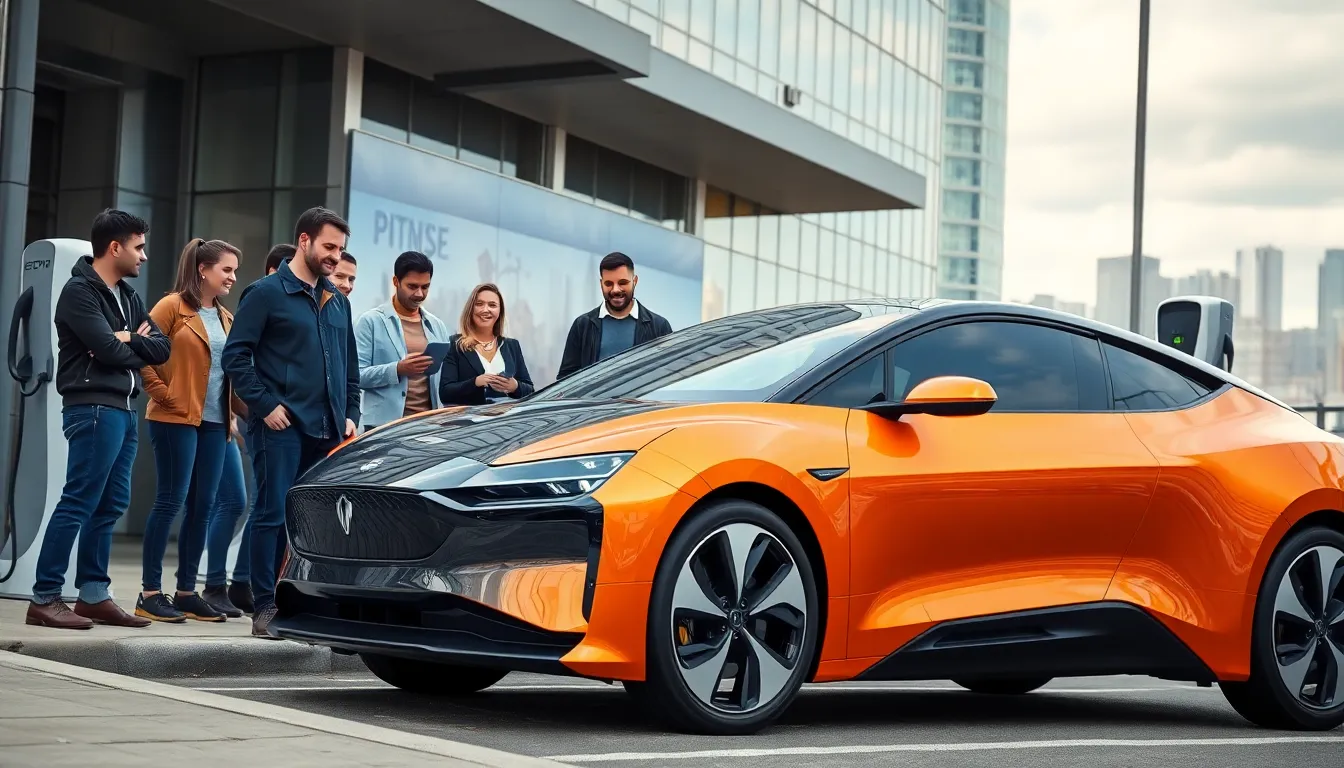We’re witnessing a transportation revolution that’s reshaping how we think about driving. Electric cars aren’t just the future anymore – they’re our present reality, offering cleaner commutes and cutting-edge technology that makes every journey exciting.
The shift from gas-powered vehicles to electric alternatives represents more than just environmental consciousness. We’re talking about superior performance, lower maintenance costs, and instant torque that’ll make you forget everything you thought you knew about acceleration. Major automakers are investing billions in electric vehicle technology, creating more options than ever before.
Whether you’re concerned about rising fuel prices, environmental impact, or simply want to experience the latest automotive innovation, electric cars deliver on all fronts. We’ll explore everything you need to know about making the switch to electric driving and why it might be the smartest decision you’ll make this year.
Why Electric Cars Are Revolutionizing the Automotive Industry
Electric vehicles represent the most important shift in automotive technology since the invention of the internal combustion engine. We’re witnessing unprecedented changes that extend far beyond simple fuel alternatives, fundamentally transforming how we manufacture, sell, and experience transportation.
Manufacturing processes have evolved dramatically as automakers retool their production lines for electric powertrains. Tesla’s gigafactories produce over 2 million vehicles annually, while traditional manufacturers like General Motors invest $35 billion in electric and autonomous vehicle development through 2025. Battery production facilities now require entirely different skill sets and supply chains compared to conventional engine manufacturing.
Consumer purchasing patterns reflect this automotive revolution with electric car sales growing 55% year over year in 2023. We see buyers prioritizing technology features, charging capabilities, and software updates over traditional metrics like horsepower and fuel economy. Price points continue dropping as production scales increase, making electric vehicles accessible to broader market segments.
Infrastructure development accelerates nationwide to support the growing electric fleet. Charging networks expand rapidly with companies like Electrify America installing over 800 fast charging stations across 45 states. Public and private investments total $7.5 billion in charging infrastructure projects, creating an entirely new service industry around electric mobility.
Regulatory frameworks push the industry forward through government incentives and emission standards. California’s mandate requiring 35% of new car sales to be zero emission by 2026 influences automaker strategies globally. Federal tax credits up to $7,500 per vehicle drive consumer adoption while supporting domestic battery manufacturing.
Technology integration transforms the driving experience as electric platforms enable advanced features impossible in conventional vehicles. Over the air software updates continuously improve performance and add new capabilities. Autonomous driving systems benefit from electric architecture’s computational power and energy efficiency requirements.
Supply chain disruptions create new global partnerships as automakers secure lithium, cobalt, and rare earth materials for battery production. We observe strategic alliances forming between car manufacturers and mining companies, reshaping international trade relationships and creating new economic dependencies.
How Electric Cars Save You Money in the Long Run
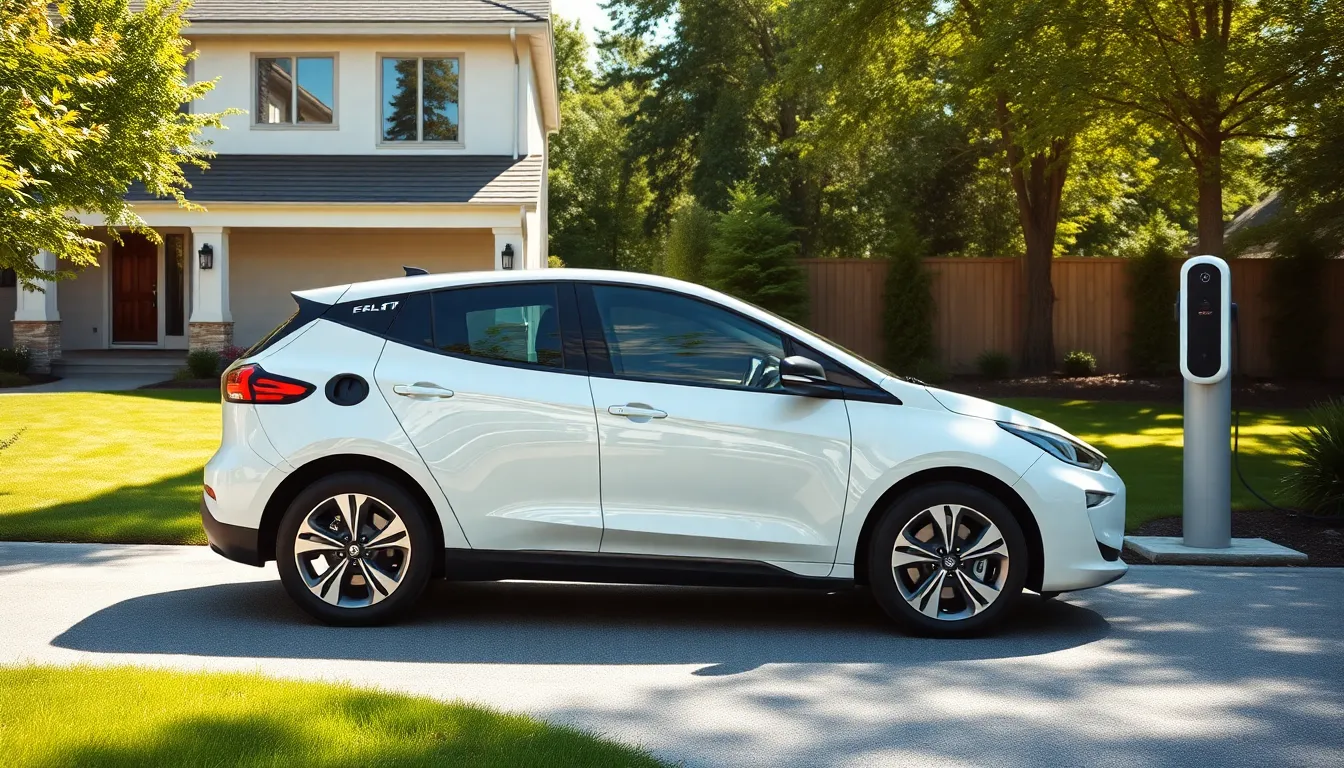
Electric cars deliver substantial financial benefits that compound over time. We’ll examine three major ways electric vehicles reduce your transportation costs significantly.
Lower Fuel Costs
Electricity costs significantly less than gasoline per mile driven. According to the U.S. Department of Energy, electric cars cost approximately $0.10 per mile to operate, while gasoline vehicles average $0.12 to $0.15 per mile. We save even more when charging at home during off-peak hours, with rates dropping to as low as $0.06 per kilowatt-hour in many regions.
Home charging provides the greatest savings potential. Installing a Level 2 home charger eliminates frequent trips to gas stations and reduces charging costs by 40-60% compared to public charging stations. Most electric car owners complete 80% of their charging at home, maximizing these savings.
Stable electricity prices protect against fuel price volatility. Gasoline prices fluctuate dramatically based on oil markets, geopolitical events, and seasonal demand. Electric rates remain relatively stable, allowing us to budget transportation costs more predictably.
Reduced Maintenance Expenses
Electric motors require minimal maintenance compared to internal combustion engines. Traditional engines have over 2,000 moving parts, while electric motors contain fewer than 20 moving components. We eliminate oil changes, spark plug replacements, air filter changes, and transmission repairs entirely.
Brake systems last significantly longer in electric vehicles. Regenerative braking captures energy during deceleration, reducing wear on traditional brake pads by up to 50%. Many electric car owners report brake pads lasting 100,000+ miles instead of the typical 25,000-40,000 miles.
Fewer scheduled service appointments reduce ongoing costs. Electric vehicles typically require service every 10,000-15,000 miles compared to 3,000-5,000 miles for gasoline cars. We spend less time and money at service centers throughout the vehicle’s lifetime.
Tax Incentives and Rebates
Federal tax credits reduce purchase prices by up to $7,500. The Inflation Reduction Act extends federal tax credits for qualifying electric vehicles through 2032. We can claim this credit directly at the point of sale starting in 2024, reducing upfront costs immediately.
State and local incentives provide additional savings opportunities. California offers rebates up to $7,000 for electric vehicle purchases, while states like Colorado, Connecticut, and New York provide credits ranging from $2,500 to $5,000. Many utilities offer additional rebates for home charging station installations.
Corporate fleet incentives accelerate business adoption. Companies purchasing electric vehicles for business use qualify for accelerated depreciation schedules and additional tax deductions. Fleet operators often combine federal credits with state incentives to reduce total cost of ownership by 20-30% compared to traditional vehicles.
What Types of Electric Cars Are Available Today
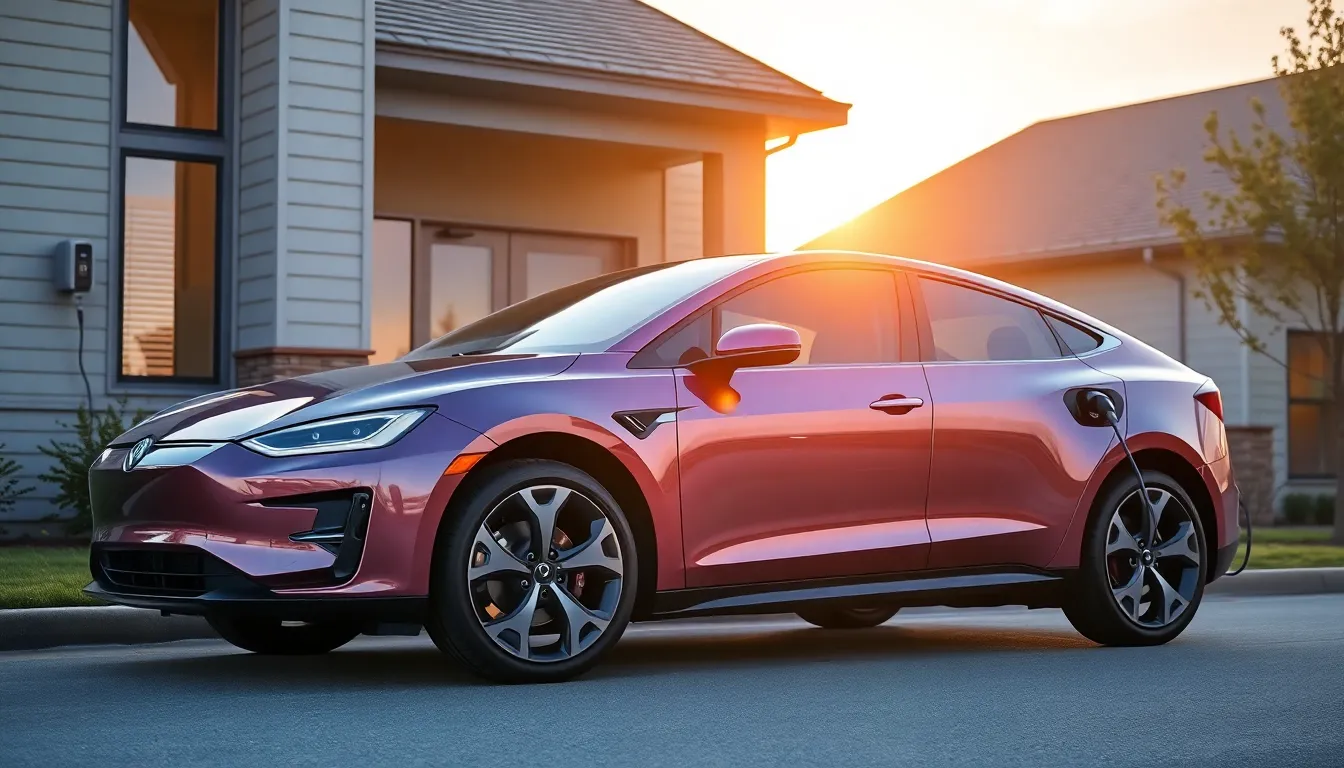
Electric vehicle technology has evolved into three distinct categories that serve different driving needs and preferences. We’ll explore each type to help you understand which option might work best for your lifestyle.
Battery Electric Vehicles (BEVs)
Battery Electric Vehicles run entirely on electric power stored in rechargeable battery packs. These cars produce zero emissions at the point of use and offer the simplest electric driving experience. Tesla Model 3, Nissan Leaf, and Chevrolet Bolt represent popular BEV options in today’s market.
Charging becomes your primary consideration with BEVs since they rely completely on electric power. Most owners charge at home overnight using Level 2 chargers, while public fast charging networks support longer trips. Range varies significantly between models, with newer BEVs achieving 250 to 400 miles per charge.
Performance advantages make BEVs appealing to many drivers who value instant torque delivery. Electric motors provide immediate acceleration without the lag associated with traditional engines. Maintenance requirements drop dramatically since BEVs contain fewer moving parts than conventional vehicles.
Plug-in Hybrid Electric Vehicles (PHEVs)
Plug-in Hybrid Electric Vehicles combine electric motors with gasoline engines for maximum flexibility. These vehicles typically offer 20 to 50 miles of electric-only range before the gasoline engine activates. Toyota Prius Prime, Ford Escape Plug-in Hybrid, and BMW X5 xDrive45e showcase diverse PHEV approaches across different vehicle segments.
Dual power sources eliminate range anxiety while still providing electric driving benefits for daily commutes. Most PHEV owners complete their regular errands using only electric power, reserving gasoline for longer trips. This setup works particularly well for drivers who can’t always access reliable charging infrastructure.
Cost effectiveness appeals to buyers who want electric benefits without full commitment to charging networks. PHEVs qualify for federal tax credits while offering backup power security. Fuel savings accumulate when you maximize electric driving, though benefits diminish if you rarely plug in to charge.
Hybrid Electric Vehicles (HEVs)
Hybrid Electric Vehicles automatically switch between gasoline engines and electric motors without requiring external charging. These systems capture energy through regenerative braking and engine operation to power the electric components. Toyota Prius, Honda Accord Hybrid, and Ford Maverick Hybrid demonstrate how HEV technology spans multiple vehicle categories.
Fuel efficiency improvements represent the primary benefit of HEV technology over conventional gasoline vehicles. Most hybrids achieve 40 to 50 MPG in combined driving conditions, significantly reducing fuel costs compared to traditional engines. The electric motor assists during acceleration and powers low speed driving in many models.
Convenience factors make HEVs attractive to drivers who want better fuel economy without changing driving habits. No charging infrastructure requirements mean you can drive anywhere gasoline is available. Maintenance schedules mirror conventional vehicles, though some components like brake pads last longer due to regenerative braking systems.
Where to Charge Your Electric Car

Finding convenient charging options becomes essential once you decide to make the electric vehicle switch. We’ll explore the three primary charging locations that make electric car ownership practical and convenient.
Home Charging Answers
Level 1 charging uses your standard 120-volt household outlet and requires no special installation. We can plug our electric car directly into any regular outlet, though this method charges slowly at 3-5 miles of range per hour. Most electric vehicle owners use Level 1 charging for overnight top-ups or emergency situations.
Level 2 charging delivers faster results through a 240-volt connection, the same type used for electric dryers. Installing a Level 2 home charger adds 25-40 miles of range per hour, making it ideal for daily charging needs. Professional electricians typically install these units in garages or driveways for $500-$2,000 depending on electrical work requirements.
Smart charging features help us optimize energy costs and grid demand. Many home chargers connect to smartphone apps, allowing us to schedule charging during off-peak hours when electricity rates drop. Some models integrate with solar panel systems, enabling us to charge our vehicles using renewable energy generated at home.
Public Charging Networks
Fast charging stations provide rapid power delivery for long-distance travel and quick top-ups. We’ll find DC fast chargers at highway rest stops, shopping centers, and gas stations that can add 200+ miles of range in 30 minutes. Major networks like Electrify America, EVgo, and ChargePoint operate thousands of fast charging locations nationwide.
Destination charging offers convenient power while we shop, dine, or run errands. Hotels, restaurants, grocery stores, and shopping malls increasingly install Level 2 chargers for customer use. These locations typically provide 2-4 hours of charging time, perfect for adding range during regular activities.
Network compatibility varies between charging providers and vehicle manufacturers. Tesla’s Supercharger network exclusively serves Tesla vehicles, while other networks use standard connectors compatible with most electric cars. Charging apps like PlugShare help us locate nearby stations, check availability, and compare pricing across different networks.
Workplace Charging Options
Employee charging programs support our daily commuting needs while reducing transportation costs. Many companies install Level 2 chargers in parking lots or garages, allowing us to charge during work hours. Studies show workplace charging reduces employee transportation expenses by $1,000-$2,000 annually.
Employer incentives make workplace charging more attractive for businesses and workers. Companies can claim federal tax credits for installing charging infrastructure, while employees benefit from convenient charging locations. Some employers offer free charging as an employee benefit, while others charge modest fees below public charging rates.
Fleet charging answers serve businesses operating multiple electric vehicles. Companies with delivery trucks, service vehicles, or company cars install centralized charging systems to support their electric fleets. Fleet managers use software platforms to monitor charging schedules, energy usage, and vehicle availability across their electric vehicle operations.
Which Electric Car Models Lead the Market
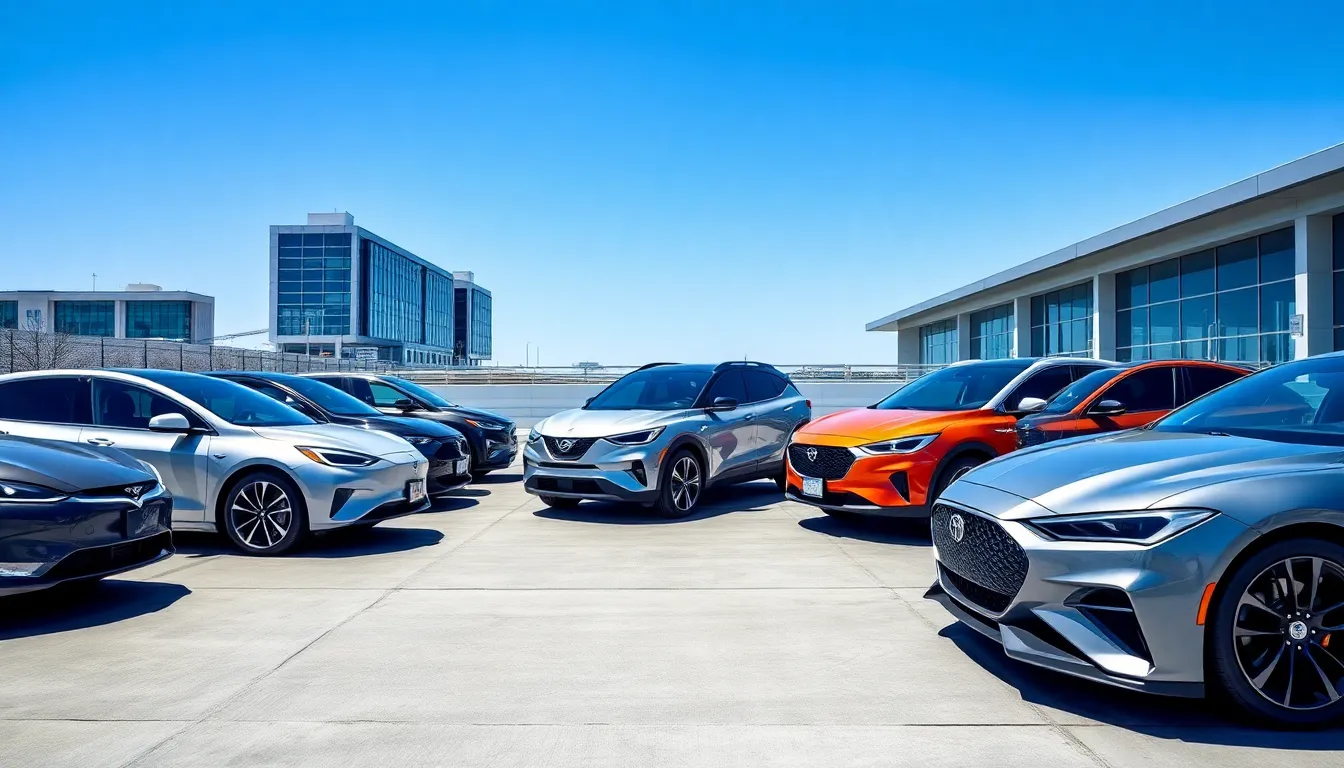
Market leaders have emerged as electric vehicle adoption accelerates across the automotive industry. We’ve analyzed sales data and consumer preferences to identify the top performers driving this electric revolution.
Tesla Model Series
Tesla consistently dominates electric vehicle sales with their comprehensive model lineup capturing important market share. Model 3 remains the best-selling electric sedan globally, delivering over 300 miles of range and impressive acceleration from 0-60 mph in 3.1 seconds. Model Y crossover has become America’s fastest-growing electric SUV, offering seven-seat configurations and Tesla’s signature minimalist interior design.
Performance specifications set Tesla apart from traditional automakers entering the electric space. Model S Plaid achieves 1,020 horsepower and reaches 200 mph top speed, while Model X features distinctive falcon-wing doors and towing capacity up to 5,000 pounds. Supercharger network provides Tesla owners with over 50,000 charging points worldwide, creating a important competitive advantage.
Chevrolet Bolt and Volt
Chevrolet Bolt EV delivers affordable electric driving with a starting price under $32,000 before federal tax credits. Range extends up to 259 miles per charge, making it suitable for daily commuting and weekend trips. Interior space maximizes passenger comfort even though the compact exterior footprint, accommodating five adults comfortably.
Bolt EUV expands Chevrolet’s electric offerings with increased cargo space and available Super Cruise hands-free driving technology. Production reached over 120,000 units in recent years, establishing General Motors as a serious Tesla competitor. Value proposition attracts budget-conscious consumers seeking electric vehicle benefits without premium pricing.
Nissan Leaf
Nissan Leaf pioneered mass-market electric vehicles when it launched in 2010, accumulating over 650,000 global sales. Current generation offers 149-mile or 226-mile range options, depending on battery configuration selected. e-Pedal technology enables one-pedal driving through regenerative braking, simplifying the driving experience for new electric vehicle owners.
Reliability reputation strengthens Leaf’s market position among consumers prioritizing proven electric technology. ProPILOT Assist provides semi-autonomous driving capabilities on highways and in stop-and-go traffic. Pricing starts around $28,000, making electric vehicle ownership accessible to middle-class families across America.
Ford Mustang Mach-E
Ford Mustang Mach-E challenges Tesla’s dominance in the premium electric SUV segment with distinctive styling and Mustang heritage. Range varies from 247 to 312 miles depending on battery and drivetrain configuration chosen. GT Performance Edition produces 480 horsepower and accelerates from 0-60 mph in 3.5 seconds.
Blue Oval charging network partnerships provide Mach-E owners access to over 63,000 public charging stations across North America. Interior features a 15.5-inch touchscreen running Ford’s SYNC 4A infotainment system with wireless Apple CarPlay and Android Auto compatibility. Sales exceeded 39,000 units in its first full year, demonstrating strong consumer acceptance of Ford’s electric strategy.
How Electric Cars Benefit the Environment
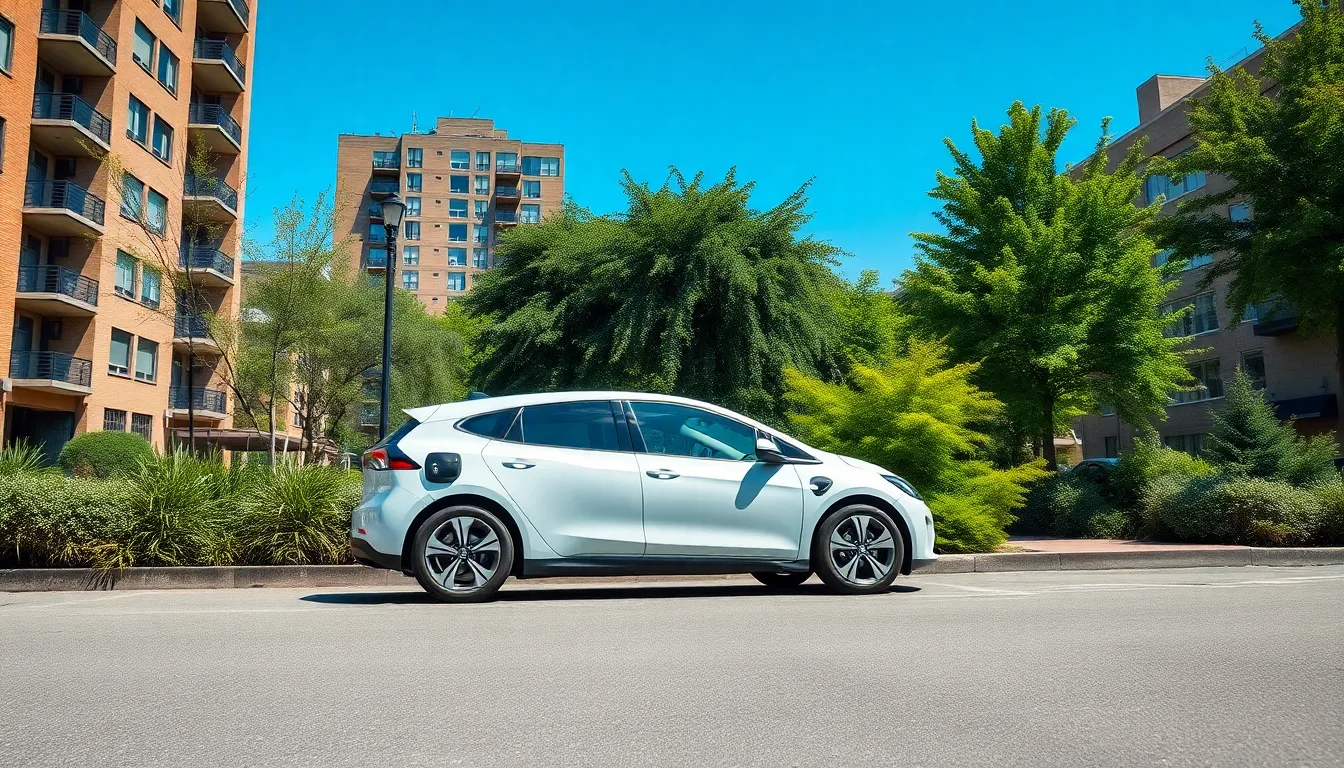
Electric vehicles create measurable positive impacts on our planet’s health. We’re witnessing environmental benefits that extend far beyond individual transportation choices.
Zero Tailpipe Emissions
Electric cars produce absolutely no direct emissions while driving. Unlike traditional gasoline vehicles that release harmful pollutants including nitrogen oxides, carbon monoxide, and particulate matter, electric vehicles operate completely clean at the point of use. We eliminate approximately 4.6 metric tons of carbon dioxide annually by switching from a typical gasoline car to an electric vehicle.
Air quality improvements become immediately noticeable in areas with high electric vehicle adoption rates. Cities like Los Angeles and Beijing report measurable reductions in smog levels and respiratory irritants when electric car usage increases. Local communities benefit from cleaner air, particularly in urban areas where traffic congestion concentrates vehicle emissions.
Reduced Carbon Footprint
Manufacturing and operating electric vehicles generates significantly fewer greenhouse gas emissions over their lifetime. Studies show electric cars produce 50% to 70% fewer carbon emissions than comparable gasoline vehicles when accounting for electricity generation sources. Even in regions where coal powers the electrical grid, electric vehicles still maintain environmental advantages due to power plant efficiency.
Battery production initially creates higher manufacturing emissions, but electric vehicles offset this impact within 12,000 to 18,000 miles of driving. We see continued improvements as battery manufacturing becomes more efficient and recycling programs expand. Electric car owners typically achieve carbon neutrality within two years of purchase compared to traditional vehicle alternatives.
Sustainable Energy Integration
Electric vehicles serve as mobile energy storage systems that support renewable power integration. Solar panels and wind turbines can directly charge electric car batteries, creating a completely sustainable transportation cycle. We’re building infrastructure that allows electric vehicles to feed excess energy back into the grid during peak demand periods.
Smart charging systems optimize renewable energy usage by timing vehicle charging with peak solar and wind production hours. Electric fleet operators report 80% to 90% renewable energy usage when coordinating charging schedules with local power generation patterns. Vehicle-to-grid technology transforms electric cars into distributed energy resources that stabilize electrical networks and reduce reliance on fossil fuel backup power.
What Challenges Electric Cars Still Face
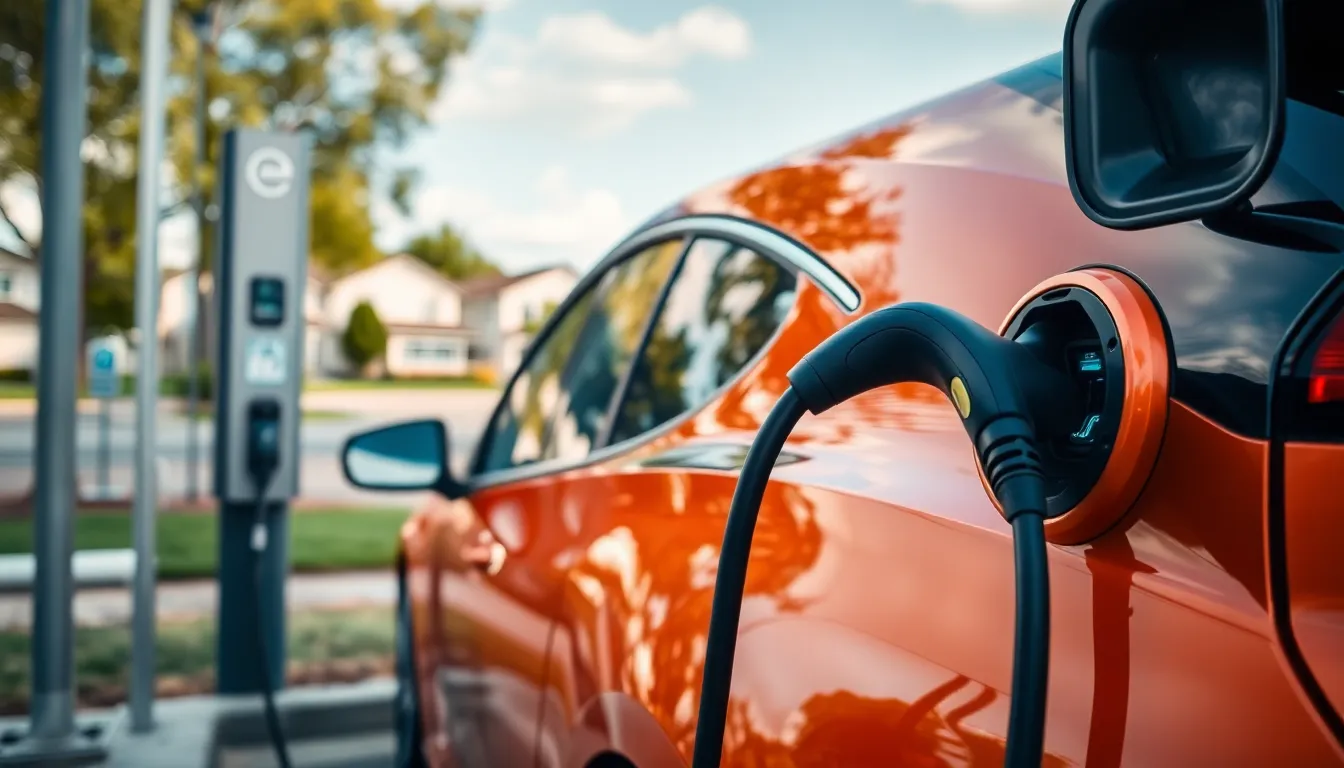
Even though their growing popularity and impressive benefits, electric vehicles continue to encounter several obstacles that affect consumer adoption. We’ve identified three primary challenges that manufacturers and drivers must navigate in today’s evolving automotive industry.
Limited Driving Range
Range anxiety remains one of the biggest concerns for potential electric car buyers, even as battery technology continues improving. Most electric vehicles today offer between 200 to 400 miles per charge, with premium models like the Mercedes EQS achieving over 450 miles of range.
Budget friendly options like the Chevrolet Bolt provide approximately 259 miles of range, while mid range vehicles such as the Tesla Model 3 deliver around 358 miles on a single charge. Long distance travelers often worry about running out of power during extended trips, particularly in rural areas where charging stations are scarce.
Weather conditions significantly impact electric vehicle range, with cold temperatures reducing battery efficiency by up to 20% in some cases. Highway driving at high speeds also decreases range more dramatically than city driving, where regenerative braking helps extend battery life.
Charging Infrastructure Gaps
Public charging networks remain inconsistent across different regions, creating challenges for electric vehicle owners who rely on away from home charging. Urban areas typically offer abundant charging options, while rural and suburban locations often lack adequate infrastructure coverage.
Fast charging stations are concentrated primarily along major highways and in metropolitan areas, leaving important gaps in coverage for cross country travel. Charging speeds vary dramatically between different network providers, with some DC fast chargers delivering 150 kW while others provide only 50 kW of power.
Apartment dwellers face particular difficulties accessing reliable charging answers, as many multi unit buildings lack dedicated charging infrastructure. Workplace charging programs are still limited, forcing many employees to depend entirely on public networks or home charging options.
Higher Upfront Costs
Electric vehicles typically cost $5,000 to $15,000 more than comparable gasoline powered cars, creating a important barrier for many consumers. Premium electric models like the BMW iX or Audi e-tron can exceed $80,000, while entry level options such as the Nissan Leaf start around $28,000.
Battery replacement costs represent a major long term concern, with new battery packs potentially costing between $5,000 to $20,000 depending on the vehicle model. Insurance premiums for electric vehicles often run 10% to 20% higher than traditional cars due to expensive repair parts and specialized service requirements.
Limited financing options and longer loan terms can increase monthly payments, making electric vehicles less accessible for budget conscious buyers even though available tax incentives and rebates.
When Electric Cars Will Become Mainstream

We’re witnessing electric vehicles rapidly approaching their mainstream adoption tipping point. Industry analysts project that electric cars will achieve mass market penetration between 2025 and 2030 across most developed nations.
Market Adoption Trends
Global electric vehicle sales reached 10.5 million units in 2022, representing a 55% increase from the previous year. We’ve observed that electric car market share now exceeds 10% in several key markets including Norway, China, and California.
Current adoption patterns show three distinct growth phases across different regions. Early adopter markets like Norway have achieved over 80% electric vehicle market share for new car sales. Mainstream markets including Germany, France, and the United Kingdom are experiencing rapid acceleration with annual growth rates exceeding 40%. Emerging markets such as India and Brazil are beginning their electric transition with government incentives driving initial adoption.
Price parity between electric and gasoline vehicles will accelerate mainstream adoption significantly. BloombergNEF projects that unsubsidized electric cars will cost the same as comparable gasoline models by 2026 in most markets. We’re already seeing this trend with models like the Chevrolet Equinox EV starting under $30,000 and the Tesla Model 3 competing directly with luxury sedans.
Consumer sentiment surveys indicate that 60% of car buyers will consider an electric vehicle for their next purchase. Range capabilities now exceed 300 miles for most new electric models, addressing the primary concern that previously deterred buyers. Charging infrastructure expansion has reached over 60,000 public stations nationwide, making electric vehicle ownership practical for more Americans.
Government Regulations and Mandates
Federal regulations are creating mandatory timelines for electric vehicle adoption across multiple sectors. The EPA’s proposed emissions standards for light duty vehicles will effectively require 60% of new car sales to be electric by 2030. We’re tracking similar mandates in 17 states that have adopted California’s Advanced Clean Cars II rule.
International regulatory frameworks are driving faster transitions in global markets. The European Union has banned internal combustion engine sales starting in 2035, while the United Kingdom moved its ban forward to 2030. China requires automakers to achieve 40% new energy vehicle sales by 2030 or face important penalties.
State level initiatives are accelerating regional adoption through comprehensive policy packages. California’s $10 billion ZEV investment plan includes rebates, charging infrastructure, and fleet electrification programs. New York has allocated $1 billion for electric vehicle incentives and charging stations through 2025.
Fleet electrification mandates are creating substantial market demand from commercial and government sectors. The Postal Service has committed to purchasing 165,000 electric delivery vehicles by 2028. Amazon’s Climate Pledge has ordered 100,000 electric delivery vans from Rivian, demonstrating how corporate commitments drive manufacturing scale.
Corporate average fuel economy standards are pushing automakers toward electric answers. CAFE requirements reaching 49 mpg by 2026 make it economically necessary for manufacturers to sell electric vehicles to meet compliance. We’ve seen automakers like GM and Volvo announce complete phase outs of internal combustion engines by 2035.
Technology Advancement Timeline
Battery technology improvements are following predictable cost reduction curves that will make electric vehicles universally affordable. Lithium ion battery pack costs have dropped from $1,100 per kWh in 2010 to $132 per kWh in 2023. We expect costs to reach $100 per kWh by 2026, the threshold where electric vehicles achieve price parity without subsidies.
Charging speed breakthroughs are eliminating the primary convenience barrier for mainstream adoption. Ultra fast charging technology now enables 10% to 80% battery charging in under 18 minutes for vehicles like the Hyundai IONIQ 6. Next generation 800V architectures will reduce charging times to under 10 minutes by 2027.
Manufacturing capacity expansion is scaling to meet projected demand through massive facility investments. Automakers have announced over $100 billion in North American electric vehicle factory construction through 2030. These facilities will have the capacity to produce 13 million electric vehicles annually by the end of the decade.
Autonomous driving features are accelerating through electric vehicle platforms due to their advanced electrical systems. Companies like Tesla and Waymo are using electric vehicles as the foundation for self driving technology development. We anticipate that Level 4 autonomous capabilities will become standard on electric vehicles by 2030.
Battery recycling technology is maturing to create sustainable supply chains for critical materials. Companies like Li Cycle and Redwood Materials are developing closed loop systems that recover 95% of lithium, cobalt, and nickel from used batteries. These recycling capabilities will reduce raw material costs and supply chain dependencies by 2028.
How to Choose the Right Electric Car for Your Needs

Choosing the perfect electric vehicle requires careful evaluation of your personal circumstances and priorities. We’ll walk you through the essential factors that determine which electric car best matches your lifestyle and financial situation.
Assessing Your Driving Habits
Understanding your daily driving patterns forms the foundation of selecting an appropriate electric vehicle. Most Americans drive approximately 40 miles per day, making nearly all current electric cars suitable for typical commuting needs.
Analyze your typical daily mileage by tracking your regular routes for a week. Urban drivers who primarily navigate city streets can confidently choose vehicles with shorter ranges like the Nissan Leaf (149 miles), while suburban commuters might prefer models offering 250+ miles per charge.
Consider your longest regular trips to determine minimum range requirements. Weekend getaways or monthly family visits help establish whether you need a long range vehicle or can rely on public charging networks during extended journeys.
Evaluate charging access at home and work to understand your daily charging capabilities. Drivers with dedicated parking spots can install Level 2 home chargers, while apartment dwellers might depend more heavily on workplace or public charging stations.
Factor in weather conditions that affect electric vehicle performance in your region. Cold climates can reduce range by 20 to 30%, making higher capacity batteries more practical for drivers in northern states.
Evaluating Budget Considerations
Electric vehicle pricing spans a wide range, requiring careful financial planning beyond the initial purchase price. Total cost of ownership includes purchase price, incentives, charging costs, maintenance, and potential battery replacement.
Calculate the effective purchase price after applying federal tax credits up to $7,500 and state incentives. States like California offer additional rebates up to $2,000, while some utilities provide charging station installation credits.
Estimate annual operating costs by comparing electricity rates to gasoline expenses. Electric vehicles cost approximately $0.10 per mile to operate versus $0.12 to $0.15 for gasoline vehicles, with potential savings of $1,000 to $2,000 annually.
Plan for charging infrastructure costs if installing home charging equipment. Level 2 home chargers range from $500 to $2,000 including installation, while public charging costs vary from $0.30 to $0.60 per kWh at fast charging stations.
Consider financing options specifically designed for electric vehicles. Many manufacturers offer competitive lease deals with lower monthly payments, while some banks provide reduced interest rates for electric car loans.
Comparing Features and Specifications
Modern electric vehicles offer diverse feature sets that directly impact daily usability and long term satisfaction. Performance specifications, technology integration, and charging capabilities vary significantly across models and price points.
Prioritize range and charging speed based on your assessed driving needs. Vehicles like the BMW iX offer 380 miles of range with 195 kW fast charging, while more affordable options like the Chevrolet Bolt provide 259 miles with 55 kW charging capability.
Examine interior technology and connectivity features that enhance your driving experience. Advanced infotainment systems, over the air updates, and smartphone integration vary widely, with Tesla leading in software capabilities and traditional automakers catching up rapidly.
Compare safety ratings and driver assistance features from IIHS and NHTSA testing programs. Electric vehicles typically earn high safety scores due to low center of gravity from battery placement, while advanced features like automatic emergency braking come standard on most models.
Assess cargo space and seating configurations to match your practical needs. Electric SUVs like the Ford Mustang Mach E offer 29.7 cubic feet of cargo space, while sedans like the Tesla Model 3 provide 15 cubic feet plus a front trunk for additional storage.
| Feature Category | Entry Level ($25,000-$35,000) | Mid Range ($35,000-$55,000) | Premium ($55,000+) |
|---|---|---|---|
| Range (miles) | 200-260 | 250-350 | 300-400+ |
| Charging Speed (kW) | 50-75 | 100-150 | 150-250+ |
| Premium Features | Basic infotainment | Advanced driver aids | Luxury amenities |
| Warranty (years) | 8/100,000 battery | 8/100,000 battery | 8/100,000 battery |
Why Electric Cars Represent the Future of Transportation
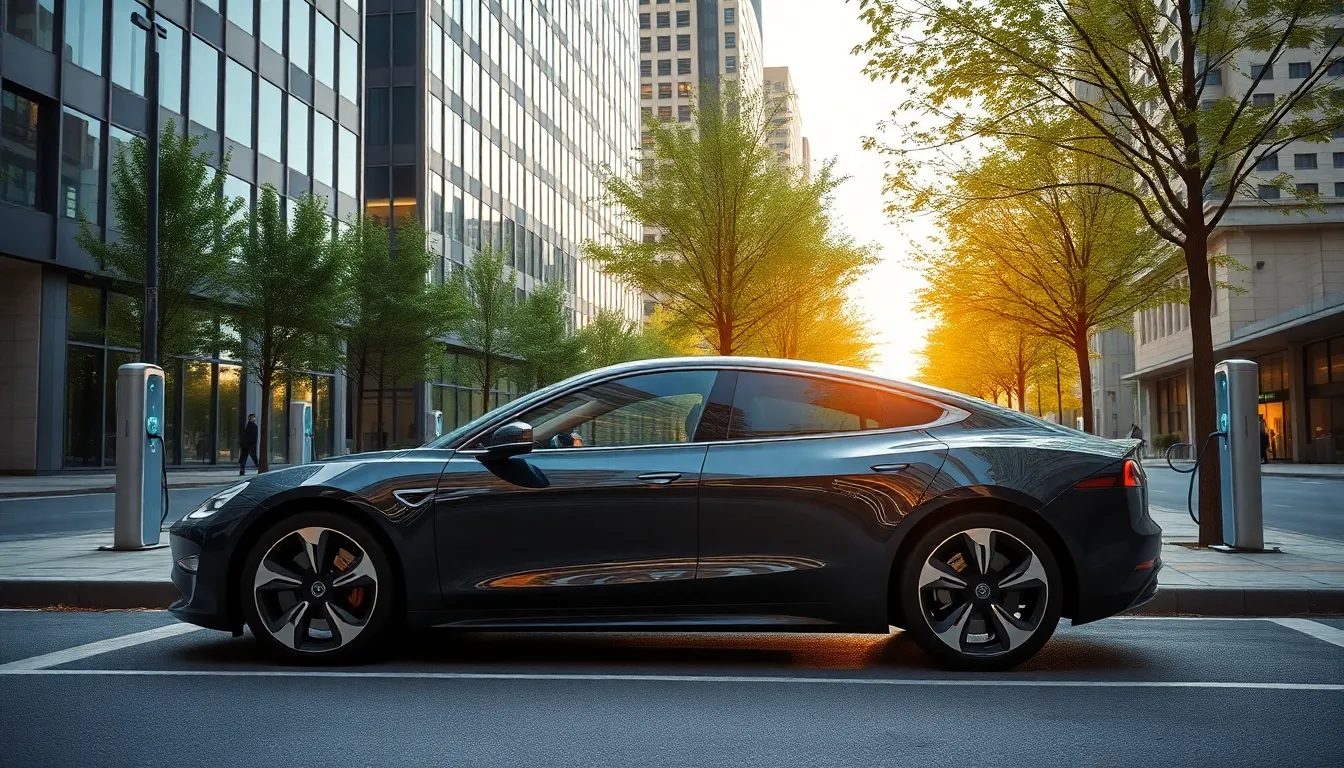
Electric cars aren’t just an alternative to gasoline vehicles anymore—they’re reshaping the entire transportation industry with unprecedented speed and innovation. Several compelling factors demonstrate why electric vehicles will dominate our roads in the coming decades.
Market momentum has reached a critical tipping point. Global electric vehicle sales jumped to 10.5 million units in 2022, representing a massive 55% increase from the previous year. Leading markets like Norway and California already see electric car market share exceeding 10%, proving consumer acceptance has moved beyond early adopters into mainstream territory.
Price parity will eliminate the primary adoption barrier. Industry analysts project that electric and gasoline vehicle prices will reach equality by 2026, fundamentally changing purchase decisions for millions of consumers. This economic milestone removes the biggest obstacle preventing widespread adoption across all income levels.
Manufacturing investment demonstrates industry commitment. Automakers have allocated over $100 billion specifically for North American electric vehicle factories, creating production capacity that will flood markets with affordable options. Tesla’s continued dominance alongside emerging competitors like Ford’s Mustang Mach-E proves manufacturers are betting their futures on electric technology.
Regulatory frameworks are accelerating the transition. The EPA’s proposed emissions standards require 60% of new car sales to be electric by 2030, creating mandatory market transformation. California’s zero-emission sales mandate and similar policies worldwide ensure automakers must prioritize electric development over traditional engines.
Technological breakthroughs solve previous limitations. Battery costs have plummeted while energy density has improved dramatically, extending range capabilities to 200-400 miles per charge for most models. Ultra-fast charging technology now reduces charging times to under 30 minutes for many vehicles, eliminating the convenience gap between electric and gasoline refueling.
Infrastructure development supports mass adoption. Public and private sectors are investing billions in charging networks, addressing the infrastructure gaps that previously limited electric vehicle practicality. Workplace charging programs and home charging answers create multiple convenient options for daily use.
Environmental regulations will restrict gasoline vehicles. Cities worldwide are implementing low-emission zones and planning complete gasoline vehicle bans within urban centers. These policies make electric vehicles not just preferable but necessary for urban mobility.
Electric transportation represents the convergence of environmental necessity, technological advancement, and economic opportunity that defines truly groundbreaking industries throughout history.
Conclusion
We’re witnessing a pivotal moment in automotive history. Electric vehicles have moved beyond early adoption phases and are becoming the mainstream choice for smart consumers who value performance efficiency and environmental responsibility.
The convergence of falling prices technological advancement and expanding infrastructure creates an unprecedented opportunity. We expect the next few years to bring even more compelling options as manufacturers compete for market share and governments accelerate supportive policies.
Whether you’re motivated by cost savings environmental impact or cutting-edge technology there’s never been a better time to explore electric driving. The question isn’t whether electric cars will succeed—it’s which model will best fit your lifestyle and budget as this transformation reshapes our roads.
Frequently Asked Questions
What are electric vehicles and how do they work?
Electric vehicles (EVs) are cars powered entirely or partially by electric motors instead of traditional gasoline engines. They use rechargeable battery packs to store energy and produce zero direct emissions. There are three main types: Battery Electric Vehicles (BEVs) that run purely on electricity, Plug-in Hybrid Electric Vehicles (PHEVs) that combine electric and gas power, and Hybrid Electric Vehicles (HEVs) that automatically switch between power sources.
How much money can I save with an electric car?
Electric vehicles offer significant long-term savings through three main areas: lower fuel costs (averaging $0.10 per mile vs $0.12-$0.15 for gas), reduced maintenance expenses due to fewer moving parts, and various tax incentives. Federal credits and state rebates can substantially reduce purchase prices, while home charging provides additional savings compared to public charging or gasoline refueling.
Where can I charge my electric vehicle?
You can charge your EV in three primary locations: at home using Level 1 or Level 2 chargers, at public charging networks including fast-charging stations for long trips, and at workplace charging programs. Home charging is the most convenient and cost-effective option, while public networks support longer journeys. Many employers now offer charging facilities to support employee commuting needs.
What is the driving range of electric vehicles?
Most modern electric vehicles offer between 200 to 400 miles per charge, depending on the model and battery size. Popular models like the Tesla Model 3 and Chevrolet Bolt provide sufficient range for daily driving needs. However, range can be affected by weather conditions, driving habits, and use of climate control systems. Range anxiety continues to decrease as battery technology improves.
Are electric cars better for the environment?
Yes, electric vehicles produce zero tailpipe emissions and significantly reduce greenhouse gas emissions compared to gasoline vehicles over their lifetime. They contribute to improved air quality in urban areas and help reduce carbon footprints. When paired with renewable energy sources, EVs can serve as mobile energy storage systems, further supporting sustainable energy usage and grid stabilization.
What are the main challenges of owning an electric vehicle?
The primary challenges include limited driving range compared to gas vehicles, inconsistent charging infrastructure especially in rural areas, and higher upfront purchase costs. Battery replacement expenses can be significant, and charging networks may be less reliable than gas stations. However, these challenges are rapidly being addressed through technological improvements and infrastructure development.
When will electric cars become mainstream?
Electric vehicles are projected to achieve mass market penetration between 2025 and 2030 in developed nations. Price parity with gasoline vehicles is expected by 2026, which will eliminate a major adoption barrier. Global EV sales reached 10.5 million units in 2022, with market share exceeding 10% in key regions like Norway and California.
Which electric car brands are leading the market?
Tesla dominates the market with popular models like the Model 3 and Model Y, known for impressive range and performance. Other market leaders include the affordable Chevrolet Bolt, the reliable Nissan Leaf, and the Ford Mustang Mach-E which challenges Tesla in the premium SUV segment. Each offers different features and price points to meet diverse consumer needs.
How do I choose the right electric car for my needs?
Consider your daily driving habits, budget, and required features. Evaluate your typical mileage, available charging access, and local weather conditions to determine needed range. Factor in total ownership costs including incentives and financing options. Compare performance specifications, technology features, safety ratings, and cargo space based on your lifestyle requirements and preferences.
Will electric cars completely replace gasoline vehicles?
The automotive industry is experiencing a fundamental shift toward electrification, driven by environmental regulations, technological advancements, and economic factors. Government mandates require increasing percentages of electric vehicle sales, with the EPA proposing 60% electric car sales by 2030. Manufacturing investments exceeding $100 billion and improving battery technology indicate electric vehicles will dominate future transportation.

